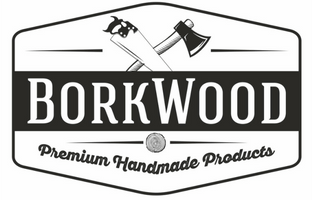Common Mistakes to Avoid When Requesting Equipment Shipping Quotes
When it comes to shipping equipment, getting an accurate quote can feel like navigating a maze. You might expect the process to be straightforward, but many people trip up on the details. Have you ever found yourself lost in the sea of quotes, only to realize that the low price you were drawn to doesn’t cover all the services you actually need? It’s a common scenario, and missing key information can lead to surprise fees or delays. With a bit of attention and understanding of what to watch out for, you can avoid these pitfalls and ensure your shipping experience is smooth and hassle-free. Let’s dive into the most common mistakes people make when requesting equipment shipping quotes so you can steer clear of them!
When requesting equipment shipping quotes, it is crucial to avoid common mistakes such as not providing complete and accurate specifications about the items being shipped, failing to vet potential carriers, and solely focusing on the lowest price rather than considering service quality. Ensuring you have comprehensive details and selecting a reliable carrier can save you from unexpected charges and delays during transport.
Common Mistakes in Requesting Quotes
One pervasive issue in requesting equipment shipping quotes is the tendency to skimp on details. Providing incomplete information about your shipment can lead to inaccuracies that ripple throughout the entire process. For example, if you neglect to mention the exact dimensions of a heavy piece of equipment, you may receive a deceptively low quote that doesn’t account for the special handling or additional space needed during transportation. This can lead to unexpected charges and even delays in pickup or delivery.
The statistics back this up: According to a 2023 ATS survey, 75% of shippers reported unexpected charges due to insufficient information.
When you provide comprehensive details right from the start, such as precise weight and dimensions, it promotes better planning and minimizes the chances of surprise fees down the line.
But it’s not just details that matter—pricing strategies also play a critical role in obtaining accurate quotes.
Another frequent mistake many make is choosing a carrier solely based on price. While it’s natural to want to save money, opting for the cheapest freight option may end up costing more than anticipated in the long run due to unreliable service, hidden fees, and potential delays. It’s essential to remember that a quote that appears low might not include necessary services or considerations that ensure safe transport. As a rule of thumb, always aim to compare quotes based on service quality, reliability, and reputation in addition to cost. By doing this, you’re more likely to find a provider whose services will save you from incurring extra costs down the line.
Additionally, failing to vet potential carriers can create huge complications for your shipping needs.
A common oversight happens when companies don’t thoroughly vet new carriers or brokers before engaging their services. Researching prospective shippers involves checking reliable metrics like their fleet’s average age, years in business, and on-time delivery rate. Neglecting this step can expose you to risks such as cargo theft schemes or poor quality service. It’s prudent to gather insights into each carrier’s track record and capabilities by reviewing online testimonials or industry reports. Doing due diligence ensures you’re entrusting your valuable equipment to a legitimate and trustworthy service provider.
Understanding these common mistakes empowers shippers to take proactive steps toward successful equipment transportation.
By addressing these typical pitfalls—whether it’s ensuring you provide complete specifications or considering more than just cost when choosing carriers—you set yourself up for smoother operations.
Ensuring Accurate and Detailed Quotes
Providing a thorough overview of the items being shipped is the foundation for receiving precise shipping quotes. When requesting quotes, think of yourself as a storyteller; you want to paint a clear picture of what you’re shipping. If you’re sending machinery that includes hazardous materials, it’s vital to mention these specifics upfront. This not only helps in preventing potential accidents but also eliminates any guesswork on the logistics provider’s end. In fact, 80% of shipping companies recommend including detailed descriptions to facilitate effective transportation.
Moving beyond mere descriptions, precise dimensions are critical components when preparing your quote request. Imagine trying to fit a large piece of equipment into a space not designed for it; this is exactly why giving exact measurements—length, height, width, and weight—is crucial. Missing any dimension can lead to significant delays or unwanted costs. A staggering 65% of equipment shipping quotes are influenced by not specifying correct dimensions and weight, so taking the time to measure accurately will save you trouble down the road.
Additionally, setting clear pickup and delivery dates further enhances your request. Just like setting an appointment with your doctor or dentist, defining when you need items collected and delivered ensures that the shipping company can allocate resources accordingly. A haphazard approach to dates may result in wasted time for all parties involved and could disrupt supply chain timelines.
By adopting this detailed approach—from describing items thoroughly to providing precise dimensions and setting clear dates—you minimize miscommunication and avoid hidden fees later in the process. This comprehensive method streamlines everything from negotiations to ensuring that your valuable assets are transported safely and on time.
As confirmed by industry data, 90% of shippers who provide complete information receive quotes within 24 hours. This not only expedites operations but fosters smoother collaboration with carriers moving forward.
With a focus on accuracy and detail, the foundation for successful equipment logistics is set. Next, we’ll explore how assessing various options can further enhance your shipping strategy.
Comparing Multiple Shipping Providers
When it comes to equipment shipping, the age-old adage “you get what you pay for” rings especially true. While it’s tempting to pick the provider that offers the lowest cost, a deeper look into various options reveals that comparing multiple shipping providers is not just about price—it’s about value. By canvassing different carriers, you can uncover important differences in pricing, services provided, and hidden fees that may not be immediately apparent.
Benefits of Getting Multiple Quotes
One major perk of seeking multiple shipping quotes is the opportunity for better pricing. This is where the magic happens; as shipping companies vie for your business, they often adjust their rates in hopes of winning your favor. It’s not uncommon to discover a provider who offers significantly lower rates compared to another—yet provides similar or even superior service quality. This competitive environment means you have a stronger position to negotiate better terms tailored to your needs.
But let’s go beyond just the dollar signs here. A thorough comparison enables you to evaluate service reliability as well. Not all providers have the same track record when it comes to on-time deliveries and customer support. An equally important factor is how each provider handles customer inquiries or claims. If there’s one thing I’ve learned from experience, it’s that having a responsive customer service team during unexpected situations can make all the difference between a smooth operation and a logistical nightmare.
Additionally, becoming aware of extra fees associated with shipping can save you from nasty surprises down the line.
When you collect quotes from various providers, you’re better positioned to identify discrepancies in extra fees—things like fuel surcharges, insurance options, and handling fees—including what services are bundled with those costs. Some carriers may lure you in with low base rates but hike up prices with additional charges you didn’t expect. Understanding these elements ahead of time grants you insights into the total cost of shipping, providing clarity and allowing for more informed decision-making.
Always aim for at least three comprehensive quotes before making your selection; this not only broadens your perspective but also ensures that you are thoroughly informed about all available options so you can make the best choice possible for both your budget and your business needs.
As we explore further, consider the impact of fees which can drastically alter your overall shipping expenses.
Understanding Additional Fees
When requesting equipment shipping quotes, it’s essential to dig deeper into the additional fees associated with the service. Quotes may sound appealing at face value, but without clarity on these surcharges, you could be in for a rude awakening when the final bill arrives. Common examples of these additional costs include fuel surcharges, insurance fees, and special handling charges.
| Fee Type | Description |
| Fuel Surcharge | Variable cost that reflects current fuel prices and can range from 5% to 20% of the total shipping cost. |
| Insurance Fees | Typically around 1% of the declared value of your shipment, with minimum fees starting as low as $10. |
| Special Handling | Charges incurred for non-standard delivery requirements such as liftgate service or inside delivery, which can add up quickly. |
For instance, if you’re shipping fragile equipment that needs extra care during transport, there could be specific fees attached to ensure your items are handled correctly. If you’re sending a package to a remote location, that might come with its own set of rural delivery charges as well.
One effective strategy is to ensure you request a detailed breakdown of all potential costs involved ahead of time. This way, you can analyze everything from fuel surcharges to any other associated accessorial charges. Knowing that a liftgate service could cost between $50 and $150 or that inside delivery might add another $75 – $200 gives you the power to negotiate and make alternatives if necessary.
By being proactive in understanding these fees, you’ll not only safeguard your budget but also empower yourself in discussions with shipping providers. As we explore further, let’s look at how effective scheduling can enhance your shipping experience.
Key Scheduling and Delivery Tips
One of the most important aspects of requesting equipment shipping quotes is to plan ahead. This means scheduling shipments well in advance, ideally several weeks prior to your target delivery date. By doing so, you not only secure better rates but also broaden your options regarding carriers and pick-up times. Think of it as laying the groundwork for a successful project—when everything is organized beforehand, you pave the way for smoother operations down the line.
This proactive approach helps avoid costly penalties often associated with last-minute requests, such as rush fees or limited availability for preferred carriers.
Another critical element is flexibility with your pick-up and delivery dates. If you can adjust these timelines slightly, you might find carriers offering lower rates to fill their schedules during less busy periods. For example, if a carrier has more available trucks during midweek compared to weekends, shifting your schedule could save you considerable money. However, flexibility doesn’t equate to being vague; rather, it is about setting realistic expectations without compromising essential requirements.
While adaptability can yield benefits, clearly communicating dates is key to ensuring everyone remains on the same page.
Next comes the vital step of confirming details. Always double-check and communicate with your carrier before dispatching your shipment. This includes confirming pick-up times, final costs, and exact delivery windows. Details like these can significantly influence scheduling effectiveness. A simple miscommunication could lead to delays that ripple through your entire supply chain.
As you finalize plans with your carrier, specify any time constraints or special requirements. Perhaps certain equipment needs specific handling or must arrive at a particular hour for operational reasons—these nuances are crucial in making sure your shipment proceeds without a hitch.
Lastly, consider the importance of accurately specifying equipment dimensions and weight when discussing quotes with carriers. In fact, 80% of logistics professionals emphasize this point, reinforcing how vital accurate information can be in avoiding misquotes or unexpected additional costs related to size or weight discrepancies.
Applying these key principles will help to ensure that you navigate the complexities of equipment shipping with greater ease and efficiency. With those strategies in mind, it’s essential now to focus on fostering effective connections with your chosen freight carriers for an even smoother experience.
Effective Communication with Carriers
Clear communication with your carriers does not just ensure that your items will ship as planned; it helps to build a relationship grounded in trust and reliability. From the outset, focus on providing comprehensive details about your shipment to avoid costly mistakes that may stem from a lack of information or misinterpretation.
Document Everything
It cannot be overstated how critical it is to have everything documented in writing. Whether it’s the type of equipment being shipped, dimensions, or even the agreed-upon pickup and delivery dates, having these details written down helps create a record everyone can refer back to. This is especially important when discrepancies arise because documentation allows parties to resolve issues without second-guessing each other’s recollections.
Remember, verbal agreements might seem quick and convenient, but they can cause confusion. Written documentation provides clarity and assurance for both parties involved.
Specify Unique Requirements
When preparing your shipment request, specify any unique situations or specialized requirements explicitly. If there are limitations related to operating hours for loading or unloading, or if special handling is necessary due to sensitive materials, spell that out clearly.
This specific information helps transportation providers plan accurately and avoid unexpected delays. For instance, if you need additional time to gather funds before executing the shipment, make that known upfront. Transparency fosters understanding and reduces miscommunication later when pressures can lead to rushed choices.
Engage in Active Listening
Engaging effectively with carriers means practicing active listening. After you provide your specifications, give carriers the opportunity to clarify their understanding of the request. Miscommunication often stems from assumptions—yours about what they’ve understood and theirs about what you’ve requested. Encourage them to repeat back key points and ask questions to clarify any uncertainties.
Consider this: 70% of shipping delays arise from miscommunication between shippers and carriers. Taking the time to ensure your message was received accurately could prevent many of these issues.
Use Proper Channels for Requests
It’s worth noting that 90% of carriers prefer receiving requests via email. This channel not only allows better documentation but also gives both parties time to review details at their own pace before confirming any agreements. Clear subject lines summarizing your requests help prioritize communications amidst a sea of emails.
According to an ATS Internal Survey from 2023, 75% of shippers who provided detailed dimensions and weight of equipment received more accurate quotes compared to those who didn’t disclose all required information upfront.
Follow Up Regularly
Once plans are set in motion, don’t overlook the importance of following up regularly throughout the shipping process.
By maintaining open channels of communication post-agreement, you stay informed and can address any arising issues before they escalate into larger problems. Regular check-ins with your carrier keep both parties aligned on expectations and timelines.
Ultimately, mastering effective communication lays the groundwork for successful freight shipping operations. By emphasizing clarity through written documentation, actively listening during discussions, specifying unique needs upfront, utilizing appropriate request channels, and insisting on regular follow-ups, you help ensure smooth and reliable transport solutions for everyone involved.







